Endocrine Views
Opinion and news from the European Society of Endocrinology

Opinion and news from the European Society of Endocrinology
First joint guidelines
In this issue
Success in Stockholm for ECE 2024
Retatrutide: a wonder-drug for obesity?


Society
03 Success for ECE 2024 in Stockholm, plus congratulations to the 2024 EJE Rising Stars
04 Executive Committee update, Register for EYES Annual Meeting, 2024 Observership recipients and ESE’s expanding office team
05 ECE hosts lively Presidential discussion
06 European Hormone Day recognised for success, plus Women’s Health Webinars
Features
07 Meet Eleni Armeni, our new Deputy Editor
08 Glucocorticoid-induced adrenal insufficiency: joint guidance with the Endocrine Society
09 Why joint guidelines matter: a transatlantic milestone
10 The European Board Exam − setting standards
11 Observerships: how mentors benefit too
12 Retatrutide and the changing landscape of obesity management
Editors’ Selection
13 Metformin for post-pancreatitis diabetes
14 Liquid biopsy in adrenocortical carcinoma
15 Shiftwork and metabolic liver disease
16 Celebrating your success at ECE 2024, plus diary dates
Editor:
Marek Bolanowski, Poland
Email: marek.bolanowski@umw.edu.pl
Deputy Editor: Eleni Armeni, Greece/UK
Email: eleniarmeni@hotmail.com
Co-Editor:
Jérôme Bertherat, France
Email: ese.president@ese-hormones.org
Editorial Board:
Faisal Ahmed, UK
Wiebke Arlt, UK
Olaf Dekkers, The Netherlands
Karim Meeran, UK
Stavroula Paschou, Greece
Marija Pfeifer, Slovenia
Robert Semple, UK
Walter Vena, Italy
Victoria Withy, ESE Office
Maria Chiara Zatelli, Italy
Karin Zibar Tomšić, Croatia
Managing Editor: Caroline Brewser
Design: Qube Design Associates
Website: www.ese-hormones.org
©2024 European Society of Endocrinology
Cover Image: ©iStock/gurzart
The views expressed by the contributors are not necessarily those of ESE. This document is available on the ESE website, www.ese-hormones.org
The addresses used to email this issue of Endocrine Views were supplied by the members of ESE. If you do not wish to receive further mailings, you can update your mailing preferences in your Member Portal or email info@ese-hormones.org
ESE thanks the following for their support.
Premium Corporate Members: HRA Pharma Rare Diseases, Novo Nordisk, Pfizer, Recordati Rare Diseases
Corporate Members: Ascendis Pharma, Kyowa Kirin, Neurocrine Biosciences, Takeda, Uni-Pharma
Supporters: Amolyt Pharma, BridgeBio, Camurus Pharmaceuticals, Crinetics Pharmaceuticals, Horizon Therapeutics, Ipsen
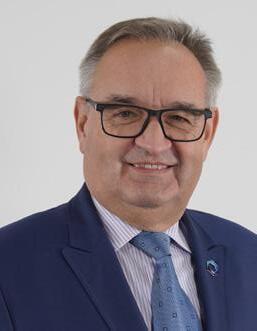
This issue celebrates an important moment in the world of endocrinology: the first joint guideline between ESE and the Endocrine Society. As Felix Beuschlein, ESE Co-Chair of the guideline working group, commented, ‘It makes complete sense to aim for international guidance with as great a reach as possible.’
You can read more from Felix Beuschlein, together with Tobias Else (the Endocrine Society Co-Chair), in our interview on page 9, where they tell us about the collaborative process. On page 8, Olaf Dekkers, another member of the guideline working group, discusses how the guideline was constructed, the issues it addresses and the important role it will perform in patient care, on both sides of the Atlantic. You can look forward to future joint guidelines annually; the next, in 2025, will focus on diabetes in pregnancy.
The management of obesity is an ongoing challenge, and effective pharmaceutical approaches provide an exciting area of research. On page 12, Francesco Giorgino and Irene Caruso discuss recent insights into the action of retatrutide, a drug with the potential to achieve levels of weight loss previously only seen following bariatric surgery.
ESE actively supports the next generation of endocrinologists and endocrine researchers. On page 10, Karim Meeran updates us on the European Board Exam in Endocrinology, Diabetes and Metabolism: an international standard by which to demonstrate knowledge of our discipline. The exam takes place virtually, and attracted candidates from around the globe at its last sitting in 2023. Another chance to take the exam is coming up soon, with grants available to help members meet the cost.
The ESE Young Endocrinologists and Scientists (EYES) Observership Programme also supports early career investigators. Importantly, it is also a valuable experience for the host centres and mentors. Find out more, including why you should consider hosting Observership Programme participants, on page 11.
The rest of these pages are full of exciting science from our journals and updates from the fantastic 26th European Congress of Endocrinology in Stockholm, the new EJE Rising Stars, the rapidly growing ESE Team, and the award-winning European Hormone Day, plus much else besides. I hope you enjoy reading the magazine; please get in touch with your ideas and

The scientific calibre of this year’s Congress was truly outstanding, and we were privileged to listen to and interact with key opinion leaders from around the world, as they presented their latest research and insights.
ECE 2024 was a diverse and inclusive event, reflecting the broad spectrum of our attendees. Clinicians, clinician scientists, researchers, nurses, patient advocates and allied health professionals all came together to share knowledge, foster collaborations and advance the field of endocrinology. This combination of perspectives added depth to the discussions and highlighted the importance of a multidisciplinary approach to endocrine health.
Heartfelt congratulations are due to all our award winners, whose exceptional work was recognised during the Congress. Your achievements inspire us all and set a high standard for excellence in our field.
Jérôme Bertherat, ESE President
All abstracts are available in Endocrine Abstracts EXTERNAL-LINK
Delegates can access all digital content via ESE On Demand EXTERNAL-LINK
ESE aims to be recognised as the reference point for European endocrinology, and media coverage is an important part of increasing awareness of the field and the Society.
The ESE media team’s work to promote the Congress led to 895 press articles about ECE 2024 (an increase from 712 articles in 2023). The coverage spanned 25 countries, in 6 languages. Outlets included mainstream newspapers as well as the medical and pharmaceutical industry press.
Our press office prepared six press releases based on abstracts accepted for ECE 2024, covering a range of topics: the impact of stress hormones in pregnancy on the IQ of offspring, the relationship between premature menopause and mortality risk, the blood sugar level at gestational diabetes diagnosis and associated outcomes, the efficacy and safety of fezolinetant in reducing hot flushes, an association between arm fat and risk of spinal fracture, and the impact of chronic stress in adolescence on later fertility.
We congratulate the 13 recipients of this year’s EJE Rising Star Awards EXTERNAL-LINK, who have been selected by the journal’s Editors for their exceptional achievement and promise as future leading clinical and translational endocrine researchers.




They will be members of the EJE Rising Star Reviewer Board for two years, benefiting from a mentorship programme for future editors of EJE and a travel bursary to attend ECE as well as EJE Editorial Board meetings.


delegates
in person 649 virtually
abstracts received
13 607 physical posters 1225 ePosters Rapid communication sessions 13 Oral communication sessions
2024 app 3400 impressions 1400 downloads







ESE’s Annual General Meeting at ECE 2024 in May saw some changes to the Society’s Executive Committee EXTERNAL-LINK-ALT
We welcomed two new members, Gregory Kaltsas (Greece) and Elena Valassi (Spain), pictured far right, who will chair the Education and Rare Disease Committees respectively, while Sebastian Neggers (The Netherlands) is the new ESE Treasurer. EYES Committee Co-Chair Walter Vena (Italy), Nurse Committee Chair Kirsten Davidse (The Netherlands) and ECAS Representative Charlotte Höybye (Sweden) all take ex-officio positions.
We thank Djuro Macut, Mirjam Christ-Crain, Antoan Stefan Šojat, Sherwin Criseno and Anton Luger, who are stepping down from their roles after making huge contributions while in office.
The 11th Annual Meeting of the ESE Young Endocrinologists and Scientists (EYES) is taking place on 6−8 September 2024 in Helsinki, Finland. It is a chance for early career investigators to present their work and make new connections. To reserve your place, register by 5 August

Attending ESE’s recent Congress in Stockholm was a truly invigorating experience. The great atmosphere, coupled with the beautiful backdrop of Sweden’s capital city, set the stage for an event that was intellectually stimulating and heart-warming. The sense of community among endocrinologists, researchers, patient advocates, nurses and industry professionals was evident, contributing to a collaborative, friendly and dynamic environment.
One of the highlights of the Congress for me was the opportunity to witness the fully formed and expanded ESE Team in action, after a period of significant recent change.
Our Leadership Team has been operational for over a year. It comprises Dirk De Rijdt, who heads Strategic Partnerships, Andrea Davis, leading Governance, Finance and our Office, Vicki Di Guisto, who leads Scientific Programmes, and Victoria Withy, heading Membership, Marketing and Communications.
We have recently welcomed several new ESE Team members,
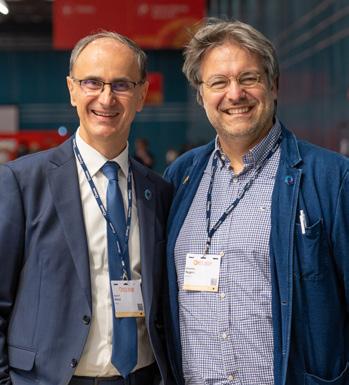
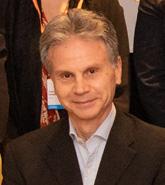

Congratulations to the following, who have received ESE funding to take part in the ESE Young Endocrinologists and Scientists (EYES) Observership Programme. The ESE website includes the full list of funded and self-funding Observership participants EXTERNAL-LINK Find out more on page 11.
Clinical: Aspasia Manta (Greece), Olga Papalou (Greece), Víctor José Simón Frapolli (Spain)
Research: Adnan Batman (Turkey), Arzu Or Koca (Turkey), Maria Riedmeier (Germany)
Advanced Research: Krisztian Bacsi (UK), Lucas Bouys (France), Mario Detomas (Germany).

who will make a valuable contribution to our activities:
• Gay Lombard, Governance Officer
• Hayley Mclay, Finance Manager
• Kat Niznik, Finance Executive
• Helen Williams, Membership Manager
• Martin Goodman, Membership Executive
• Megan Gell, Senior Marketing Executive
• Giulia Esposito, Event Executive.
The full ESE Team EXTERNAL-LINK now represents seven countries across Europe.
These appointments mark a significant milestone in our development: the completion of an important stage for ESE, bringing finance, membership, marketing and the implementation of our sponsorship and exhibition activities in-house.
Our team, many of whom were attending their first Congress, fitted in and contributed wonderfully to
the success of the event. I couldn’t be prouder of them all and the successful Congress. This was not just a gathering of professionals, it was a celebration of the strength and unity of the ESE community. I am always available to discuss any ESE matters at helen.gregson@ ese-hormones.org.
Helen Gregson Chief Executive Officer, ESE

I enjoyed very much our new format for the President’s address at ECE 2024. ‘Discussion with the President’ aimed to give an insight into the dynamism of the Society, and how we are moving forward.
Our Society is only 18 years old, but it has seen a huge growth in membership and activities over recent years. For instance, the ESE Team did not exist before 2015. Changes include new journals, the EndoCompass research roadmap, and the State of Endocrinology project, among many others.
As you can read here, four colleagues from the ESE Executive Committee joined me on stage, to talk about four of our key areas of development. You can also watch the full ‘Discussion with the President’ EXTERNAL-LINK-ALT online.
Bertherat ESE President
Wiebke Arlt ESE President-Elect
Increasing the proportion of basic scientists within the membership is important. There is already growth: at present only 8% of membership are basic scientists, but this was 7% last year.
Maria Chiara Zatelli ESE Secretary
Women comprise 52% of the membership and ESE has members from 106 countries, so we can see improvement. We want to increase participation among mid- and low-income areas, as only 16% come from these regions.
Another aim is to improve the balance in award nominations: currently most nominations are for male candidates − which means most of the awards will be won by men. The number of nominations for committees has been excellent, with 80 applications for 10 positions! Now we want our committees to reflect the split of membership in terms of gender. Transparency has been improved by an open call for committee membership. Our next goal is to increase
nominations from Eastern Europe.
Improved connections with nurses and patient advocacy groups has seen increased membership from both these sectors, but we would like to see more − and Jérôme has an ambition for ESE to have a nurse president.
Helen Gregson ESE Chief Executive Officer
ESE’s first employee was appointed just eight years ago. The team has since grown in proportion to the Society’s activities! ESE’s ambitious, fastmoving strategy required it to have its own employees, and I am very proud of our growing team and the robust infrastructure that we have created.
The aim is to boost this growth. Clinicians or clinician scientists can easily recognise that they are endocrinologists, but this is not the case for basic scientists. So, ESE needs to reach out to the basic science community, to find those who would not consider coming here − for example, basic scientists in a research institute or in industry: many are doing things that would identify them as endocrinologists.
ESE has many good offerings to benefit basic and translational scientists: awards and grants, and EYES initiatives such as the Research Observership Programme. These need to be well advertised, and people need to know that they can access all these benefits for a very reasonable membership fee.
After first developing a core strategic team, we gradually brought most operational services in-house. Our current team of 19 spans seven countries; geographic diversity is important for a European society.
Setting up a new database to host all of ESE’s data was complex! However, it is hugely beneficial, particularly to have the membership side of things close to us. We can listen to member needs first-hand, and respond quickly and
Early career activities
Antoan Stefan Šojat ESE Young Endocrinologists and Scientists Committee
Early Career Members make up a third of ESE and, most importantly, the Society provides them with a great sense of inclusion and participation, so they feel really at home. Representatives of EYES take part in most ESE committees, and participate in guideline development and projects such as EndoCompass.
The support provided to Early Career Members through activities such as the Observership Programmes and educational events is valuable, especially the opportunity to access senior endocrinologists and scientists. Equally important is the ability to receive grants and distribute funding.
I am most excited about the expansion of the Observership Programmes outside of Europe, and the emphasis on basic scientists, connecting the community around the world. I am also proud that ESE prioritises working towards improving the environment, with digital materials and a huge focus on endocrine disruptors, which is translating into policies and informing the wider public.
make data-driven decisions. It also enables us to drive ESE’s strategy more efficiently and initiate new activities, for instance our work in policy and advocacy, the EndoCompass research roadmap, and the patient advocacy group scheme.
The third European Hormone Day EXTERNAL-LINK was held on 24 April 2024, bringing together the voices of national societies, patient advisory groups, specialist societies and many others to promote the small steps we can all take towards better hormone health.
Key activities included creation of a public outreach toolkit with translations in 15 languages, a policy toolkit to support outreach to political representatives, a new @BecauseHormonesMatter Instagram account EXTERNAL-LINK, a public relations pitch to media and a Because Hormones Matter booth at ECE 2024.
We saw engagement from over 100 organisations across 28 countries and in 19 languages, as well as two new endorsements of the Milano Declaration EXTERNAL-LINK by Members of the European Parliament. Our endocrine community held live events and press conferences, hosted webinars, set up stands at hospitals, created videos − and even baked cakes! This resulted in 70+ press articles, ESE member appearances on podcasts, radio and television, and hundreds of social media posts – together we reached an estimated 43 million people.
This is the first year that European Hormone Day has been celebrated as a separate day outside of ECE. This meant that the ECE 2024
booth reflected the larger Because Hormones Matter campaign, encompassing European Hormone Day, public relations activities and the ongoing social media campaign around related awareness days.
What next? We will continue to share the 10 Recommendations for Good Hormone Health EXTERNAL-LINK-ALT throughout the year and invite our community to do the same. You can access the materials in 15 different languages in our European Hormone Day toolkit EXTERNAL-LINK. Keep the conversation going by using the #BecauseHormonesMatter hashtag, so we can amplify each other’s voices and continue to raise awareness of the importance of hormones in health and disease.
Thank you for your support!

We are delighted that the 2023 European Hormone Day campaign received the ‘Effective Voice of the Year’ Award during the Association World Congress held in Graz, Switzerland, in June 2024. It was an honour to be recognised by the Association of Association Executives, especially among nominees including the World Heart Federation. Victoria Withy, ESE Head of Membership, Marketing and Communications who led the campaign, accepted the award on behalf of everyone who has worked together to raise the profile of hormone health.
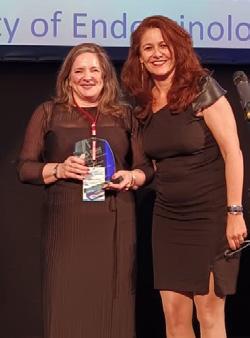
ESE collaborated with one of its Specialist Partner Societies, the European Menopause and Andropause Society (EMAS), to present two Webinars on Women’s Health EXTERNAL-LINK-ALT in April 2024. The first webinar, on fertility in late reproductive age, took place on 17 April and was chaired by Angelica Hirschberg (Sweden) and Kristina Saravinovska (Serbia), with talks by Evangelos Makrakis (Greece), Ljiljana Marina (Serbia) and Melanie Davies (UK). Menopause was the subject of the second event on 18 April, which
was chaired by Irene Lambrinoudaki (Greece) and Antoan Stefan Šojat (Serbia), with speakers Andrea Giannini (Italy), Adam Czyżyk (Poland) and Tim Hillard (UK).
Both sessions enjoyed outstanding engagement, with 746 registrants and 238 attendees from a total of 66 countries for the first session, and 701 registrants and 226 attendees from 96 countries for the second.
You can find more information about ESE webinars EXTERNAL-LINK-ALT and EMAS webinars EXTERNAL-LINK-ALT online.

We are delighted to welcome the following organisational members, who have recently joined the Society:
• National Partner Society, the Lebanese Society of Endocrinology, Diabetes and Lipids
• Specialist Partner Society, the European Pituitary Pathology Group
• Patient Advocacy Group Affiliate Member, Osteogenesis Imperfecta Federation Europe.
Find out more about ESE Organisational Memberships EXTERNAL-LINK-ALT
Eleni Armeni recently became the first Deputy Editor of Endocrine Views. We took the opportunity to find out more about her life in the world of endocrinology, and why she wanted to become involved in the Society’s membership magazine.
What is your current role in endocrinology?
In my clinical role, I serve as a consultant specialising in endocrinology and diabetes at the Royal Free Hospital NHS Trust in London, UK. On the scientific front, my focus lies in investigating the interplay between sex hormones and cardiometabolic outcomes among young women diagnosed with polycystic ovary syndrome as well as in postmenopausal women. Additionally, I hold the position of Treasurer on the elected Board of the European Menopause and Andropause Society, and I am an Editor for the journal Maturitas, which covers midlife and postreproductive health, and boasts an impact factor of 4.9.
Who or what inspired your interest in hormones?
Two individuals significantly influenced my fascination with hormones. Initially, my mother’s diagnosis of hyperthyroidism sparked my interest in understanding endocrine disorders first-hand. Secondly, a medical school professor imparted wisdom that resonated deeply with me: ‘Endocrinology is captivating because the clinical presentation alone can often lead to a diagnosis for your patient.’
What would you have done if not endocrinology?
Following closely behind my passion for medicine is my interest in mathematics, paired with informatics. Had I not pursued medicine, I probably would have ventured into computer engineering.
What areas of endocrinology particularly interest you?
At the forefront of my interests lies reproductive and developmental endocrinology, with a particular focus on menopause research. A secondary interest that emerged later is neuroendocrinology. Working alongside esteemed leaders in both fields has been a privilege, igniting my enthusiasm and driving me to delve deeper into these areas of study.
What big challenges does endocrinology face?
In our field, we face significant hurdles, stemming from the consequences of environmental exposure to chemical pollutants. One of the key challenges lies in the often latent nature of these implications, which may not manifest clinically until the later stages of the disease. This delayed recognition complicates diagnosis and management, underscoring the critical need for heightened awareness and proactive monitoring. Moreover, there’s a concerning trend of waning interest in endocrine research, largely attributable to the scarcity of funding available to support budding researchers. This scarcity not only hampers the progress of scientific inquiry but also jeopardises our ability to develop innovative solutions to address emerging endocrine-related health concerns. As such, revitalising investment in endocrinological research is imperative to surmounting these challenges and advancing our understanding and treatment of endocrine disorders.

Why did you want to join the Endocrine Views team?
Being a member of the magazine’s Editorial Board enables me to play an active role in advancing knowledge within the field of endocrinology, ensuring that only top-notch topics are shared with the scientific community. Additionally, serving on the Board opens doors to valuable networking opportunities, fostering collaborations, exchanges of ideas, and personal development. Lastly, I embraced the challenge of developing a platform that bridges the gap between early career, mid-career and advanced career endocrinologists. Endocrine Views aims to captivate professionals at all stages of their careers, regardless of their level of experience or seniority.
How can Endocrine Views best support ESE members?
Endocrine Views serves as a vital resource for members by accurately showcasing the Society’s activities,
‘Endocrine Views fosters an environment that is conducive to the exchange of ideas and diverse perspectives, promoting collaboration and innovation within the field.’
training opportunities and research grants. Additionally, it functions as a dynamic platform that enriches clinicians’ clinical practice with valuable insights while providing a comprehensive update for basic scientists. This fosters an environment that is conducive to the exchange of ideas and diverse perspectives, promoting collaboration and innovation within the field.
Which parts of ECE do you most enjoy each year?
I am especially fond of the PreCongress Courses, as they provide excellent educational opportunities tailored to early and mid-career members. The plenary lectures are equally exciting, as they highlight the latest advancements in hormone science. Nevertheless, I find great enjoyment in attending the conference social events, as they offer valuable chances to engage with colleagues from around the globe and foster meaningful professional connections.
What are we likely to find you doing on a day off?
During my leisure time, I very much enjoy taking walks, going swimming, and spending quality time with friends.
Olaf Dekkers highlights this new ESE and Endocrine Society Joint Clinical Guideline,1 the first of many future collaborations.
Glucocorticoids (GCs) are widely prescribed as anti-inflammatory and immunosuppressive agents. It is estimated that at least 1% of the adult population is on chronic GC therapy.2 As exogenous GCs suppress the hypothalamus−pituitary−adrenal (HPA) axis, this population is potentially at risk for GC-induced adrenal insufficiency. This risk is dependent on the dose, duration and potency of the GC, the route of administration and individual susceptibility.3
The recently published guideline, a joint effort of ESE and the Endocrine Society, aims to provide advice regarding diagnosis and therapy of GCinduced adrenal insufficiency.1 Considering the widespread use of GCs and the risk of GC-induced adrenal insufficiency, the guidance will support not only endocrinology specialists, but also other specialists involved in the care of these patients.
Developing the guideline
To create the guideline, we performed systematic reviews to guide the recommendations. The reviews considered the incidence of recovery of the HPA axis after GC-induced adrenal insufficiency, the optimal tapering scheme for GCs in patients no longer in need of these drugs for the underlying condition, and the diagnostic accuracy of biochemical testing for adrenal insufficiency in GC users.
Taking into account the high prevalence of GC use, the evidence was (surprisingly) limited. Most papers on biochemical testing did not relate the data to clinical symptoms compatible with adrenal insufficiency or adrenal crisis. We also did not find good evidence for the optimal tapering scheme in GC users. However, there was no clear evidence that patients who were tapering were at serious risk for adrenal crisis.1
The guideline recommends that, in general, patients on or tapering off GCs for non-endocrine conditions do not need to be evaluated by an endocrinology specialist. However, these patients should be informed about various endocrine aspects of their GC therapy. This includes iatrogenic Cushing’s, adrenal insufficiency and GC withdrawal syndrome.
When considering tapering, two types of tapering should be distinguished:
• tapering of GC therapy dose guided by the status of the underlying disease (=therapeutic tapering)
• tapering guided by the management of GC withdrawal and (prevention of) adrenal insufficiency (=endocrine tapering).
It should be emphasised that the evidence behind the recommendations on tapering is weak, and that individual patient characteristics and patient preferences need to be taken into account.
The guideline suggests not to taper GCs in patients on short term GC therapy of less than 3−4 weeks, irrespective of the dose. In these cases, GCs can be stopped without testing, due to low concern for HPA axis suppression. Endocrine tapering should only be attempted if the underlying disease no longer needs GC therapy. In these cases, GCs are tapered until the physiologic daily dose equivalent is approached (e.g. 4−6mg prednisone). In general, tapering of GCs can be more rapid within a supraphysiological range, followed by a slower taper when GC dosing is physiological.
GC withdrawal syndrome should be taken into consideration as it may occur during GC tapering. When GC withdrawal syndrome is severe, the GC dose can be temporarily increased to the most recent one that was tolerated, and the duration of GC tapering could be increased.

‘The guidance will support not only endocrinology specialists, but also other specialists involved in the care of these patients.’
The central question is how to determine the adequate functioning of the HPA axis. Again, there is no firm evidence that can guide the optimal strategy. The guideline proposes two approaches: a) continue to gradually taper the GC dose, while clinically monitoring for signs and symptoms of adrenal insufficiency, or b) test using a morning serum cortisol (see the guideline for discussion of the cut-offs1).
We suggest against routinely performing a dynamic test for diagnosing adrenal insufficiency in patients who are tapering or stopping GC therapy, as morning cortisol measurement can serve as a simple approach to HPA axis assessment, obviating the need for other tests in many individuals.
In patients with current or recent GC use, who have not undergone biochemical testing to rule out GC-induced adrenal insufficiency and who present with haemodynamic instability, vomiting or diarrhoea, the guideline suggests that the diagnosis of adrenal crisis should be considered, irrespective of the GC type, mode of administration and dose. Patients with suspected adrenal crisis should be treated with parenteral GC and fluid resuscitation.
Olaf M Dekkers
Guideline Working Group, Leiden, The Netherlands
REFERENCES
1. Beuschlein, Else et al. 2024 European Journal of Endocrinology https://doi.org/10.1093/ejendo/lvae029 and Journal of Clinical Endocrinology & Metabolism https://doi.org/10.1210/clinem/dgae250
2. Fardet et al. 2011 Rheumatology https://doi.org/10.1093/rheumatology/ker017
3. Broersen et al. 2015 Journal of Clinical Endocrinology & Metabolism https://doi.org/10.1210/jc.2015-1218
We talked to Felix Beuschlein and Tobias Else, the Co-Chairs of the ESE and Endocrine Society joint guideline working group, about creating the Societies’ first joint guideline and the benefits of collaboration. Watch the video EXTERNAL-LINK-ALT
Felix Beuschlein Co-Chair for ESE
Why did the Societies decide to start producing joint guidelines?
I was not involved in the early discussions but, from a medical point of view, it makes complete sense to aim for international guidance with as great a reach as possible. Glucocorticoid-induced adrenal insufficiency is a global problem, across borders and continents. I can only applaud the sister Societies for making this decision, and I look forward to future common guideline initiatives.
As Co-Chairs of the working group, what did you and Professor Else aim to achieve?
We really tried to define the clinical problem and the knowledge gaps that come with it. With these in mind, we set out to provide some guidance –even in the absence of very great scientific evidence. We also wanted to make sure that we had good representation from both Europe and the USA, to cover potential differences in clinical practice. We were privileged to have an excellent team of specialists with great knowledge, diligence and enthusiasm – all of which are required to write a guideline from scratch.
Why was glucocorticoid-induced adrenal insufficiency chosen as the first topic?
We wanted to choose a subject that had not recently been covered by either of the Societies’ guideline committees. The guideline also needed to address a clinical problem that is relevant and/or frequent. At least 1% of the global population uses chronic glucocorticoid therapy as an anti-inflammatory or immune-suppressive agent, so endocrine questions related to this broad usage made it a very good target for guidelines.
What are the long term benefits of joint guidance?
I hope that the global reach will extend further than a guideline from either Society. I also think that the discussions between the panel members while writing the guidelines, and the review process that included all members of both Societies, have resulted in a level of consensus that had not been reached before.
How did you address differences in access to therapies and diagnostic tools on either side of the Atlantic?
We aimed to make the guidance as simple as possible and avoid complicated tests and procedures. This is indeed important, not only because of global differences in the access to medical care, but also because of our target audience of general practitioners and non-endocrine specialists.
Is there anything you would like to add?
We built the guidance on current knowledge, and it is clear that scientific and clinical progress will be required to improve the level of evidence. ‘After the guideline’ is also ‘before the guideline’ and changes over time will be inevitable.
The Societies plan to publish a new joint guideline each year, to address differences in practice between Europe and the USA:
2025 − Diabetes in pregnancy
2026 − Arginine vasopressin resistance and deficiency
2027 − Male hypogonadism

Tobias Else
Co-Chair for the Endocrine Society
Please tell us about your role in the Endocrine Society I have been involved in the Clinical Practice Guidelines Committee since 2015, and am part of the Endocrine Board Review Writing Committee. Both activities are extremely rewarding. My interests are in clinical care, translational research and medical education, and in all aspects I have been supported by the Endocrine Society – so this is a way to give back to the Society and our international community of endocrinologists!
Why was it important for the Societies to start collaborating on guidelines?
The collaboration was a dream of mine. Then, in 2019, I co-chaired the Endocrine Society Guidelines Task Force and we realised that we needed to extend our global engagement. That cleared the road on the side of the Endocrine Society to start the process. I am excited that we managed to come together for the enterprise of common, equally collaborative guidelines.
What had to be addressed to develop recommendations for both the USA and Europe?
There are certainly different practice habits in both Societies. Even within the USA and within Europe there are significant differences. The truth is that science and best care are not different from country to country. What sometime differs is the culture of practice and the means to practise in accordance with guidelines. However, guidelines can be adapted to local, regional and national differences – one needs to adapt to what is available.
What are the long term benefits of joint guidance?
Collaboration in guideline development is the way to go; the next step will be to go beyond our endocrine partners. It does not make sense to have different guidelines on the same topic by different societies. Working in a global team also provides a tremendous learning experience and the realisation that we truly are not as different as we assume. We may carry a lot of presumptions and prejudices, and I think we are ready to get rid of them. Global guidelines will help!
What other areas would most benefit from future joint guidelines?
I think, more importantly, we need to solidify our system regarding which guidelines to continue to update − and, frankly, which ones to retire. There also will be differences in the guideline ‘product’ space. Soon there will also be expert-level guidance products. That will mirror the necessity for guidance on rare disease topics, where evidence is often as rare as the disease itself, and we depend greatly on experts’ experiences. I feel that these areas will lend themselves to collaborative guidelines, as we could gather more expertise.
You can find the joint guideline online EXTERNAL-LINK
The European Board Exam EXTERNAL-LINK-ALT provides an international standard for the recognition of knowledge among early career endocrinologists, as Karim Meeran explains.
The European Board Exam in Endocrinology, Diabetes and Metabolism (EBEEDM) came about as a result of ESE joining forces with the European Union of Medical Specialists (UEMS) to co-develop an examination in endocrinology, diabetes and metabolism, which would enable candidates to gain internationally standardised recognition of their clinical expertise. The exam took place digitally on 8 November 2023 and the next sitting will be on 13 December 2024.
The exam has been developed by highly qualified clinicians and has a panEuropean governance. This comprises representatives from ESE, UEMS and endocrine societies across Europe, through the ESE Council of Affiliated Societies (ECAS). The exam has been designed to assess a candidate’s knowledge and understanding of the clinical sciences relevant to specialist medical practice, and of common or important disorders to a level appropriate for a newly appointed specialist in endocrinology and diabetes.
The EBEEDM comprises two 3-hour, 100-question, single best answer papers and is delivered in a computer-based format via remote invigilation. This has enabled candidates from around the world to take part. In addition to testing core knowledge and comprehension, the examination also assesses the ability to interpret information and to solve clinical problems.
Planning for this exam started in earnest about three years ago. The first stage was to generate a bank of questions that could be standardised across Europe. The Royal College of Physicians of Ireland (RCPI) was commissioned to set up the exam, and the first set of exam questions was generated by a group of specialist endocrinologists who spent a few days hosted by the RCPI. The exam was blueprinted, to ensure that there were adequate questions from different parts of the curriculum.
We were divided up into groups of different specialists from all over Europe. Using the curriculum as a basis, we generated a large number of questions. The style had to be one of a ‘single best answer’, where all five options are potentially correct, but only one is the best answer. We all found it particularly difficult to write good quality distractors. Distractors are potentially correct answers which are not the best answer, and hence incorrect. It is, of course, a lot easier to write questions with some answers that are definitely wrong − but such questions are not good assessors of knowledge.


A simplified example of a poor question is given in the Figure, to illustrate the problem! I have used this obvious example to illustrate the point, but it can be more subtle when you are writing questions on which you are an expert, and you don’t notice such anomalies.
Having written a number of questions each, we were then subjected to the indignity of having our questions reviewed by other experts in the room. This was not only great fun but also rather awkward where there were some obviously wrong answers that you had not spotted.
Once these questions had been rewritten and edited so that all five options were at least possible, we were then subjected to further quality control by the RCPI, who made sure that the questions made sense and generated a paper that we all had to actually attempt. Having somebody else attempt your questions sometimes made it clear that the correct answers were not as obvious as you had first thought.
The next step was standard setting, where we all attempted the paper and decided how difficult the questions were, and our input was used by the RCPI to generate the pass mark.
Analysis of the data from the first sitting reveals that there were a total of 158 candidates from 42 countries (see Table). The pass mark was 64%, and the pass rate 69%. The next sitting on 13 December 2024 will give more candidates the chance to prove their abilities; details will be online EXTERNAL-LINK-ALT
The popularity of the examination will increase as more endocrinologists use it to prove their expertise. We are now ready for training schemes across Europe to add this exam to their list of mandatory requirements to become a ‘specialist’ in endocrinology, diabetes and metabolism. The goal is for this to become the formal exit exam for many European countries.
Karim Meeran Exam Board Member,
London, UK
The Society provides a number of ESE Examination Grants EXTERNAL-LINK-ALT to cover 50% of the cost of taking the EBEEDM, for ESE members who in the ‘in-training’ or ‘reduced rate’ categories. Applications for grants will open in due course.

The ESE Young Endocrinologists and Scientists (EYES) Observership Programme benefits not only early career participants but also the host centres and mentors. Find out why you should get involved.
The vision for the EYES Observership Programme came seven years ago, from the EYES Committee chaired by Ljiljana Marina, to provide early career investigators (ECIs) with a one-month stay in a distinguished European endocrine centre. Participating centres are asked to provide a mentor and a facilitator to liaise with visiting ECIs, while EYES provides a co-ordinator to connect the centre and the applicant. Any ESE member who is in training, with a published paper, can apply. Due to different European laws, the scheme is called an ‘Observership’.
The scheme has since expanded in many ways (see panel below). Its true value is in the connections that are made, and the invaluable knowledge and inspiration the mentors pass on to the ECIs, shaping the future of endocrinology. As you can see on the right, our mentors find that the scheme brings them benefits too.
The importance of the Observership Programme can be seen in the transformative experiences it offers. Participants speak of life-changing encounters, career advancements, and collaborations that go beyond the actual stay. Beyond the numbers, the true impact is seen in the mentors and centres that participate. New mentors and centres are always welcomed. By opening your doors, you would not only transfer knowledge and expand networks, but actively contribute to crafting the future of the field.
Joining as a centre is simple. Mentors should outline the clinical or laboratory opportunities available to visiting ECIs, and provide contact details for themselves and for a facilitator who will liaise with the ECIs (forming a valuable link between the centre and the EYES Co-ordinators). Centres should also share any additional relevant information, such as regulations. This approach ensures that each centre’s unique offerings and requirements are taken into account.
To find out more, contact eyesoprogram@gmail.com or visit www.esehormones.org/observerships. You can see details of this year’s recipients on page 4.
Kristina Saravinovska, Juan Manuel Jiménez Vacas and Antoan Stefan Šojat Observership Programme Co-ordinators
• Clinical Observership Programme (COP) launched 2019 for clinicians-in-training.
• Research Observership Programme (ROP) launched 2021 for basic/translational scientists or MDs.
• Advanced ROP began in 2024 for more experienced scientists, offering 3-month stays.
• ESE funds three places on each programme annually.
• Supported participants receive €1000 for COP and ROP, or €3000 for advanced ROP
• Other places are self-funded by participants.
• Currently there are 19 COP centres and 16 ROP centres
• 90 people from 25 countries have benefited so far.
• ESE funding of €30,000 has supported the top candidates.
• The new Bilateral Observership Programme (BOP) supports exchanges outside Europe, initially piloting with Brazil.
Curitiba
Córdoba Lyon
Observership Programme Centres of Special Interest: more coming soon!

Darko Kastelan
COP Mentor, University Hospital Zagreb, Croatia
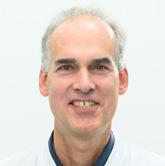
Martin Fassnacht
ROP Mentor, University Hospital Würzburg, Germany

Flavia Prodam
COP Mentor, University Hospital, Novara, Italy
‘Engaging in the Observership Programme and interacting with young endocrinologists from various European countries has enriched our professional landscape and fostered a culture of cross-border collaboration within our field. Witnessing the positive transformative impact of this programme on both sides is perhaps the most rewarding aspect. Not only do young endocrinologists acquire new knowledge in expert centres, but they also bring fresh perspectives, ultimately enriching our practice. This dynamic exchange enhances career development and strengthens the European endocrinologists’ network.’
‘I am a great fan of the EYES Observership Programmes, because they bring together young clinicians and scientists across Europe. The closer these links are, the better our endocrine patient care and research will be in the future, because the exchange of ideas and experiences will improve knowledge and skills on both sides. Moreover, these friendships are a small but important step towards peace in Europe.’
‘Through the Observership Programmes, I have increased my knowledge of the management of endocrine and metabolic diseases in different countries. Guidelines are for all of us, but clinical practice varies according to the country’s rules and the organisation of national health systems. This helps us to understand how to address health disparities in a community working on hormones. It has been very rewarding to see that young endocrinologists selected for the programme are enthusiastic and engaged. They hope to practise the best endocrinology both now and in the future. This motivates mentors. Fellows at the host institution have been positively influenced by visiting colleagues, and critical discussions on clinical cases and hot topics involved all the team.’
How does retatrutide enable patients to achieve weight loss goals previously only associated with bariatric surgery?
The global prevalence of obesity has more than doubled since 1990, reaching pandemic proportions. In 2022, over 1 billion people globally were living with obesity, a number that is projected to keep rising.1
To date, bariatric surgery has proven to be the most efficacious approach to lowering body weight, reducing the risk of type 2 diabetes, dyslipidaemia, hypertension, cancer, cardiovascular diseases and mortality. It is recommended for patients with a body mass index (BMI)≥35kg/m2 and one or more obesity-related complications, or people with a BMI ≥40kg/m2 However, <2% of eligible patients actually receive this treatment.2
Until recently, anti-obesity medications yielded only modest and temporary weight loss, making the development of new highly effective and durable pharmacological options a clinical and social priority.2
Incretin-based therapies
Incretin-based therapies are emerging as the most promising solution to address this challenge. Once-weekly glucagon-like peptide-1 receptor agonist (GLP-1RA) semaglutide (2.4mg) and the glucose-dependent insulinotropic polypeptide (GIP)/GLP-1 dual agonist tirzepatide (15mg) have already been approved for the management of obesity. They showed up to 16 and 21% of mean body weight loss and up to 65.6 (SD 10.4) and 79.3 (SD 11.5)% of participants losing >10% initial body weight in the dedicated STEP and SURMOUNT programmes respectively (Figure).3
A recent phase 2 study conducted in 338 non-diabetic adults with obesity revealed the potentially even greater weight-lowering efficacy of retatrutide (a GIP/GLP-1/glucagon (GCG) triple agonist).4 These individuals, when treated with retatrutide (12mg) showed a mean body weight loss of 24.2% at 48 weeks, allowing 93% of participants to achieve a reduction in initial body weight >10% (Figure).4 Approximately half of the participants lost more than 25% of their initial body weight, and a quarter lost more than 30%, reaching goals that have previously only been feasible with bariatric surgery.4
Retatrutide also yielded unprecedented weight-lowering efficacy (−16.9% with retatrutide 12mg) in patients with overweight/obesity who had type 2 diabetes, in whom the benefits of GLP-1RA or GIP/GLP-1 dual agonists are often blunted.5
Retatrutide is a 39-amino acid single peptide, engineered from the GIP backbone to achieve triple agonist activity at the GCG, GIP and GLP-1 receptors.5 As shown in preclinical models with GIP/GLP-1 dual receptor agonists, the concomitant additional activation of the GCG receptor might further enhance the effects on energy intake and displayed by tirzepatide, and possibly foster energy expenditure, driving the greater weight loss reduction observed in clinical trials with retatrutide.6 In fact, experiments in mice showed that retatrutide might counteract the reduction of energy expenditure which represents the typical metabolic adaptation to reduced body weight and food intake, and is a major obstacle to durable and sustained body weight control with anti-obesity medications.6 Interestingly, GCG receptor agonism is critical to the efficacy of retatrutide, by specifically affecting the increase in energy expenditure rather than the decrease in food intake, as shown by experiments with a GCG receptor antagonist.6 The simultaneous activation of GCG and GIP signalling might also lead to greater amelioration of lipid metabolism (reduced hepatic lipogenesis and increased lipid oxidation) and circulating lipid profile, especially triglyceride levels (lowered by up to 35%), as compared to GLP-1 signalling alone.5 The consequent reduction in ectopic fat depots might be crucial to prevent or improve the metabolic and cardiovascular complications of obesity. Meanwhile, non-injectable incretin-based anti-obesity medications are currently under development, such as oral semaglutide (50mg) and oral non-peptide GLP-1RA orforglipron, displaying clinical benefits in line with once-weekly semaglutide (2.4mg).
The development of highly efficacious anti-obesity medications is likely to encourage clinicians to pursue more ambitious weight goals in obesity management, aiming to significantly alleviate the associated burden of metabolic and load-bearing complications. Moreover, these drugs harbour the potential to shift the focus from type 2 diabetes management to prevention and long-standing remission of hyperglycaemia, changing the epidemiology of this widespread disease, which finds in fat excess one of its main pathogenetic mechanisms. While displaying unprecedented benefits in weight loss and metabolic features, these newly developed multi-receptor agonists reassuringly did not show any significant difference in safety or tolerability compared with GLP-1RA.3−5 However, low adherence and persistence to incretin-based antiobesity medications have been reported in real-world studies, perhaps due to lack of compliance with injectable medications, lack of support from the public healthcare system, or lack of awareness of the clinical and social implications of long-standing obesity.3 A heterogeneous response to treatment might also have discouraged patients from sustaining the costs of these medications, while the overall sustainability of a costly chronic pharmacological therapy remains an issue.
Of note, non-responders to retatrutide (12mg) were not detected in this early phase 2 trial, as nearly all patients lost at least 5% of body weight,4 probably due to the tackling of multiple signalling pathways.
If these results with retatrutide are replicated in wider randomised controlled and real-world studies, healthcare policies might be modified accordingly to further support patients and healthcare professionals in their battle against obesity.
Francesco
Giorgino and Irene Caruso
Department of Precision and Regenerative Medicine and Ionian Area, Section of Internal Medicine, Endocrinology, Andrology and Metabolic Diseases, University of Bari Aldo Moro, Italy
REFERENCES
1. Boutari et al. 2022 Metabolism https://doi.org/10.1016/j.metabol.2022.155217
2. le Roux et al. 2023 Obesity https://doi.org/10.1002/oby.23612
3. Caruso et al. 2024 npj Metabolic Health & Disease https://doi.org/10.1038/s44324-024-00015-4 (In Press).
4. Jastreboff et al. 2023 New England Journal of Medicine https://doi.org/10.1056/NEJMoa2301972
5. Rosenstock et al. 2023 Lancet https://doi.org/10.1016/S0140-6736(23)01053-X
6. Coskun et al. 2022 Cell Metabolism https://doi.org/10.1016/j.cmet.2022.07.013
This recent study1 examined the validity of metformin’s use in patients with post-pancreatitis diabetes mellitus (PPDM).
Post-pancreatitis diabetes mellitus is a common sequela of acute and chronic pancreatitis, presenting as a distinct form of secondary diabetes which is characterised by severe metabolic disruptions and increased risk of hypoglycaemia and mortality.2,3 Metformin is recommended as the initial treatment for PPDM in clinical guidelines, whether used alone or in combination with insulin.4 However, the effects of metformin and other glucose-lowering therapies have not been validated through clinical trials specific to this subtype of diabetes.
Instead, the decision to utilise metformin for PPDM is largely grounded in pathophysiological reasoning and experiences derived from managing type 2 diabetes. This arises from the broad exclusion of people with pancreatic diseases from trials exploring glucose-lowering therapies. Therefore, it becomes imperative to explore alternative sources of information to gain a comprehensive understanding of the efficacy and safety profile of metformin and other glucose-lowering therapies in PPDM.
Our recent study in European Journal of Endocrinology1 explored the correlation between metformin treatment and severe hypoglycaemia, major adverse cardiovascular events (MACE) and all-cause mortality.
Metformin as time-varying exposure
We conducted a historical nationwide population-based cohort study involving 3781 Danish individuals diagnosed with new-onset PPDM. Within the PPDM group, patients were further classified as cases related to acute or chronic pancreatitis. Additionally, 222,337 individuals diagnosed with new-onset type 2 diabetes were included for validation purposes, benefiting from the established knowledge of metformin’s effects in this population.
We sought to investigate the effect of metformin versus no metformin treatment on three key outcomes: severe hypoglycaemia, MACE and all-cause mortality. Acknowledging the dynamic nature of medical treatments, we assessed metformin treatment as a time-varying exposure, enabling the categorisation of individuals as exposed or unexposed to metformin to vary over time. In addition, we considered demographic variables, risk factors, covariates and additional glucose-lowering therapies, including insulin, in the analyses.1
Diabetes caused or exacerbated by pancreatitis-induced damage to the endocrine pancreas (PPDM) accounts for around 1−2% of all diabetes. It is associated with substantial morbidity and mortality. Despite this, PPDM has commonly been excluded from landmark diabetes randomised controlled trials. This means that guidance for pharmacotherapy is poorly evidence-based, tending to be extrapolations from other forms of diabetes. The recommendation to use metformin is a good example.
This pharmaco-epidemiological study leverages the availability of large scale interrogatable healthcare records in Denmark, including prescribing information, to examine outcomes of metformin treatment in incident PPDM. Allying this data resource to statistical treatment, taking into account varying prescribing patterns for combinations of hypoglycaemic therapies over time, the study supports current recommendations. It shows not only reduced hypoglycaemia but also reduced major cardiovascular events and mortality with metformin therapy, supporting more limited prior evidence of its beneficial effects on mortality.
This welcome new evidence guides treatment of an often neglected subtype of diabetes.
Robert Semple Deputy Editor, European Journal of Endocrinology
Our research uncovered a significant decrease in the risk of severe hypoglycaemia (adjusted hazard ratio (aHR) 0.41, 95% confidence interval (CI) 0.27−0.62, P<0.0001) associated with metformin use among individuals diagnosed with PPDM. The finding was also consistent in a sensitivity analysis limited to patients treated with insulin. To our knowledge, this is the first study to observe a substantial reduction in hypoglycaemic risk among patients with PPDM who are receiving metformin treatment.
In patients with pancreatitis, damage to pancreatic islet cells diminishes pancreatic polypeptide secretion, triggering hepatic insulin resistance and heightened gluconeogenesis.5 This rise in blood glucose necessitates glucose-lowering treatments, possibly including insulin, which can increase the risk of hypoglycaemia. The ability of metformin to inhibit hepatic gluconeogenesis may lower the need for insulin, thus decreasing the risk of hypoglycaemic in PPDM through an insulin-sparing effect.
In accordance with a prior cohort study,6 we confirmed that treatment with metformin was associated with a reduced risk of all-cause mortality in PPDM (aHR 0.56, 95% CI 0.49−0.64, P<0.0001). While the exact mechanisms behind this finding are probably intricate and multifaceted, it is recognised that the influence of metformin extends beyond glycaemic control and the reduction of microvascular complications.
In addition, we observed a significant decrease in the risk of MACE (aHR 0.74, 95% CI 0.60−0.92, P=0.0071) associated with metformin treatment in patients with PPDM, primarily linked to a decreased risk of stroke. Short term fluctuations in glucose levels emerge as a potential contributor to adverse cardiovascular outcomes, which is particularly noteworthy for patients with PPDM, who often exhibit significant swings in blood glucose levels (i.e. a ‘brittle diabetes’ phenotype).3 Metformin treatment could potentially improve glucose stability in PPDM, thereby reducing susceptibility to MACE.
Finally, our study confirmed the well-established advantageous impacts of metformin treatment in individuals with type 2 diabetes.
In conclusion
Metformin treatment is associated with a significantly reduced risk of adverse outcomes in patients with PPDM. These findings endorse the recommendation of metformin as a glucose-lowering therapy in these patients, whether as a stand-alone treatment or in combination with insulin.
Line Davidsen and Søren S Olesen Centre for Pancreatic Diseases and Mech-Sense, Department of Gastroenterology and Hepatology, Aalborg University Hospital, Denmark
REFERENCES
1. Davidsen et al. 2024 European Journal of Endocrinology https://doi.org/10.1093/ejendo/lvad175
2. Olesen et al. 2022 Diabetes Care https://doi.org/10.2337/dc21-2531
3. Woodmansey et al. 2017 Diabetes Care https://doi.org/10.2337/dc17-0542
4. Löhr et al. 2017 United European Gastroenterology Journal https://doi.org/10.1177/2050640616684695
5. Hart et al. 2016 Lancet Gastroenterology & Hepatology https://doi.org/10.1016/s2468-1253(16)30106-6
6. Cho et al. 2019 Diabetes Care https://doi.org/10.2337/dc19-0145
Research recently published in European Journal of Endocrinology 1 describes a DNA-based liquid biopsy approach for management of adrenal cancer.
Unmet clinical need
Adrenocortical carcinoma (ACC) is a rare and generally highly aggressive endocrine cancer. Despite recent developments, there are still critical unmet clinical needs for patients with ACC. For instance, no easily applicable biomarkers are available that can effectively predict the risk of disease recurrence or overall survival at the time of the diagnosis. Moreover, close surveillance is essential to monitor disease evolution and timely treatment, but this requires frequent imaging that results in increased radiation exposure, and cannot always answer diagnostic questions.2
Role of liquid biopsy in oncology
Liquid biopsy, i.e. the analysis of tumour material obtained in a minimally invasive manner by sampling blood or other body fluids, is increasingly proposed in oncology for molecular profiling, detection of residual disease and monitoring of disease evolution.3
In fact, biomarkers found in blood or urine can potentially provide greater information, more easily and frequently, than a tissue biopsy. Specifically, alongside the red and white blood cells, the bloodstream contains a host of other molecules that can provide researchers with valuable information about cancer.
Analysis of circulating cell-free DNA
Our bicentric study involved patients with ACC from two large European referral centres: Birmingham (UK) and Würzburg (Germany). We developed a robust and easily applicable method to assess cancer-specific alterations in small fragments of DNA released from tumour cells into the bloodstream.1
In brief, we established a pipeline for the isolation and quantification of circulating cell-free DNA (ccfDNA) from serial blood samples of patients with primary ACCs, using routine consumables and commercially available kits. We then performed a targeted next-generation sequencing analysis on the ccfDNA samples, using a customised panel of ACC-specific genes to detect somatic variants (i.e. coming from the tumour tissue).4
ccfDNA-based biomarkers in patient management
We were able to demonstrate that ccfDNA concentrations are elevated in almost all patients with ACC, compared with healthy subjects. ACC-specific genetic variants can be detected in almost half of ACC cases. Notably, some of these variants affected genes that are potential drug targets.
The primary endpoint of our study was to investigate the potential role of ccfDNA-related biomarkers for prognostication and monitoring of ACC. Assessing the relationship between ccfDNA concentrations and somatic variants versus both clinical outcome (e.g. progression-free and overall survival) and standard radiological imaging, we demonstrated that our approach can identify markers that could help to:
a) better predict the clinical course of patients with ACC, in comparison to tumour stage alone
b) recognise disease relapses and/or progression during disease surveillance.
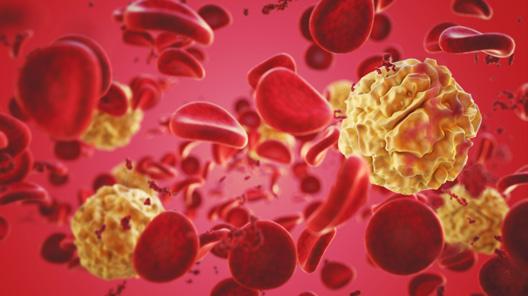
As ccfDNA-related biomarkers can be frequently detected in patients with primary ACC, liquid biopsy represents a promising, minimally invasive tool to improve prognostic classification and complement surveillance imaging in ACC. We propose that our approach could be used, in combination with imaging, for detection of early recurrences in patients after successful surgery, and for monitoring of disease evolution in patients with advanced ACC.
Further studies are required before these biomarkers can be implemented in clinical practice. In the near future, we aim to validate our findings in patients with ACCs during a long term monitoring period, focusing on the role of ccfDNA analysis in disease surveillance.
Cristina L Ronchi
Institute of Metabolism and System Research, College of Medical and Dental Sciences, University of Birmingham, UK
REFERENCES
1. Lippert et al. 2024 European Journal of Endocrinology https://doi.org/10.1093/ejendo/lvae022
2. Fassnacht et al. 2018 European Journal of Endocrinology https://doi.org/10.1530/eje-18-0608
3. Wan et al. 2017 Nature Reviews Cancer https://doi.org/10.1038/nrc.2017.7
4. Lippert et al. 2018 Journal of Clinical Endocrinology & Metabolism https://doi.org/10.1210/jc.2018-01348
Endocrinologists are very familiar with the use of proteins or hormones secreted from endocrine cancers as tumour biomarkers, but less familiar with the use of other tumour-derived biomolecules. The ability to amplify trace amounts of nucleic acids, in particular circulating cell-free DNA (ccfDNA) derived from tumour cells, offers powerful and exciting new possibilities in cancer diagnosis and monitoring. This may have particular value in commonly aggressive but variable cancers, such as adrenocortical carcinoma (ACC), where existing imaging, biochemistry and histology offer only imperfect prognostication.
This study (the largest to date) describes a pipeline for isolating, quantifying and sequencing ccfDNA in ACC. Both the overall amount of ccfDNA and the presence of specific cancer-associated mutations are demonstrated to be markedly elevated in ACC, and to predict outcome. This is a very encouraging further step towards incorporation of ccfDNA analysis in the diagnosis and follow up of ACC.
Further, longer term and larger scale studies are now required to solidify findings before roll out can be recommended.
Robert Semple Deputy Editor,
European Journal of Endocrinology
This recent paper in Endocrine Connections1 has explored the relationship between shiftwork and metabolic liver disease for the first time.
Cardiometabolic disease is prevalent. As well as killing people early, it results in healthcare costs and low quality of life. With an ageing population, new strategies are urgently needed to impact the frequently multimorbid spectrum of cardiometabolic diseases. Several studies have identified associations between human rhythmic behaviours, sleep and specific cardiometabolic diseases, such as type 2 diabetes.2
Metabolic liver disease, previously termed non-alcoholic fatty liver disease (NAFLD), and recently renamed to metabolic dysfunctionassociated steatotic liver disease (MASLD), is common and frequently undiagnosed. It plays an important role in driving cardiometabolic disease, as well as being a critical step on the pathway to more severe liver inflammation and cirrhosis. Indeed, MASLD is the most common liver disease and a leading cause of liver-related morbidity and mortality.
In advanced economies, shiftwork is a frequent experience. In the UK, 20% of workers are exposed to shifts. Shiftwork is associated with both mental and physical illness, but analysis is often confounded by other factors, including type of work, other risk behaviours and socioeconomic deprivation.
3−5 Experimental shiftwork protocols in animals or humans drive changes to sleep, and also drive misalignment of the internal circadian oscillation with the external light−darkness cycle, as well as associated behaviours including sleep and eating. This misalignment may increase the risk of cardiometabolic disease, for example, by having highly rhythmic processes that are now out of phase with the environmental challenges, e.g. eating at the wrong time of day.6
Our study
Surprisingly, the impact of shiftwork on NAFLD or MASLD had not been explored before. In our paper in Endocrine Connections, 1 we used the UK Biobank, which is a 500,000-strong cohort of UK residents. Shiftwork exposures are recorded, as is chronotype (the natural preference to be active at different times of day, e.g. morning types), and a wealth of genetic and metabolic data are available.
We first identified that NAFLD was not coded accurately across the cohort, with far fewer cases coded than predicted. This is a frequent issue in dealing with silent conditions, but required alternative approaches to be tested. We used the Dallas steatosis index (DSI) as a means to find people with a high probability of NAFLD in the UK Biobank, and looked to see if exposure to shiftwork was associated. We did find a significant association.
Cardiometabolic diseases, including metabolic liver disease (MASLD), are prevalent and often undiagnosed, leading to early mortality, high healthcare costs, and low quality of life. As the population ages, new strategies are urgently needed.
Studies have shown that disruptions in circadian rhythms, particularly due to shiftwork, are associated with increased risk of these diseases. The investigators in this study used a combination of methods including data from the UK Biobank and magnetic resonance spectroscopy to explore the impact of shiftwork on MASLD, finding significant associations mediated by obesity and extreme chronotypes.
These findings highlight the need for interventions to align behaviours with circadian rhythms, to mitigate shiftwork-related health risks and inform future research and policy.
Faisal Ahmed
Editor-in-Chief,
Endocrine Connections
We employed mediator analysis to see if obesity (body mass index) was a likely explanation for the association, and indeed it was. Obesity has a recognised association with shiftwork. We also looked to see if chronotype was associated with NAFLD, and it was. Here we found that extreme late chronotypes were associated with NAFLD, with an odds ratio of 1.45.
A final approach was to use imagingbased estimates of liver fat content. The hepatic proton density fat fraction (PDFF) is a magnetic resonance spectroscopy method for estimating liver fat. We found that irregular nightshift workers, but not permanent nightshift workers, had raised PDFF, indicating an increase in liver fat.
Taken together, our data identify an association between shiftwork and NAFLD. The extreme late chronotype association supports circadian misalignment as a likely mechanism. This suggests that a behavioural intervention to promote alignment of eating behaviour with underlying circadian phase would mitigate the risk of shiftwork. Currently, there is no evidence base of approaches to support nightshift workers but, with these new insights, suitable trials can now move forward.
David W Ray and Matthew Baxter

John Radcliffe Hospital; Oxford Centre for Diabetes, Endocrinology and Metabolism; and Oxford Kavli Centre for Nanoscience Discovery, University of Oxford, UK
This research/study/project is funded/supported by the National Institute for Health and Care Research (NIHR) Oxford Health Biomedical Research Centre. The views expressed are those of the author(s) and not necessarily those of the NIHR or the Department of Health and Social Care. DWR NIHR Oxford Health Biomedical Research Centre grant reference number: NIHR203316; MRC MR/W019000/1 and MR/V034049/1.
REFERENCES
1. Maidstone et al. 2024 Endocrine Connections https://doi.org/10.1530/EC-23-0472
2. Vetter et al. 2018 Diabetes Care https://doi.org/10.2337/dc17-1933
3. Butler et al. 2023 Journal of Biological Rhythms https://doi.org/10.1177/07487304231179595
4. Maidstone et al. 2021 Thorax https://doi.org/10.1136/thoraxjnl-2020-216651
5. Maidstone et al. 2021 Thorax https://doi.org/10.1136/thoraxjnl-2020-215218 [as corrected].
6. Hunter et al. 2020 Proceedings of the National Academy of Sciences of the USA https://doi.org/10.1073/pnas.2005330117

Ilpo Huhtaniemi (right, UK) was awarded Honorary Membership of ESE, in recognition of his outstanding service to our field, through his important role in reproductive endocrinology and his contribution to the basic science activities of the Society.
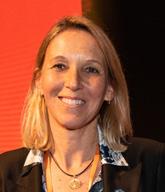

Riccarda Granata (left, Italy) and Beata KosKudła (Poland) received Special Recognition Awards. Riccarda was recognised as the first Congress Committee Chair to lead the ECE Programme Organising Committee (2019−2023). Beata was honoured for her work as ESE Publishing and Communication Committee Chair, and for raising the Society’s profile in Eastern Europe.

Jens C Brüning (Germany) Geoffrey Harris Award

Felix Beuschlein (Switzerland) Transatlantic Alliance Award

Li Chan (UK) EuropeanJournalof EndocrinologyAward

Kathrin Zopf (Germany) European Endocrine Nurse Award

Gudmundur Johannsson (Sweden) European Hormone Medal

Giuseppe Bellastella (Italy)
Jens Sandahl Christiansen Award
You can read interviews with our Award Lecturers in the ECE Blog EXTERNAL-LINK-ALT
Award winners
The 2024 recipients are Catarina CidadeRodrigues (Portugal), Lee Ti Davidson (Sweden), Bartosz Domagała (Poland), Alexandra Giannou (Greece), Heleen Jansen (The Netherlands), Svenja Leibnitz (Switzerland), Jonathan Mertens (Belgium), Edoardo Luigi Maria Mollero (Italy), Barbora Pekova (Czech Republic), Mark Smits (The Netherlands), Kai Xu (The Netherlands) and Lieve van Zijverden (The Netherlands).
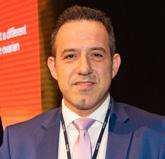
Panagiotis Anagnostis (Greece) Clinical Endocrinology Journal Foundation Award
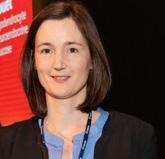
Clémence Blouet (UK)
Jens Sandahl Christiansen Award
The 2024 winning clinical posters were presented by Audrey Agius (France), Cihan Atila (Switzerland), Antonio Cano (Spain) and Anja Fenger Dreyer (Denmark). The winning basic science/translational posters were presented by Antonio García-Estrada (Spain), Heike Heuer (Germany), Davide Masi (Italy) and Marc Philipp Schauer (Germany).
Read all the award-winning abstracts in Endocrine Abstracts EXTERNAL-LINK-ALT
For more information about any ESE event see www.ese-hormones.org.
11th EYES Annual Meeting 6-8 September 2024
Helsinki, Finland
ESE Talks… Rare Diseases
17 September and 5 November 2024
Online
ESE Spotlight on Science: Tracking the intracellular movement of membrane proteins
19 September 2024
Online
ESE Clinical Update on Adrenal and Cardiovascular Endocrinology 2024
24–26 September 2024
Online
ESE Talks… led by EUWIN (European Women in Endocrinology)
3 October and 6 November 2024
Online
EndoBridge 2024
17–20 October 2024
Antalya, Turkey
34th Postgraduate Course in Clinical Endocrinology, Diabetes and Metabolism
28 October−1 November 2024
Online
Joint Congress of ESPE and ESE 2025
10–13 May 2025
Copenhagen, Denmark
5 August 2024
11th EYES Annual Meeting
Registration
23 August 2024
EndoBridge 2024
Clinical case submissions
3 September 2024
ESE Clinical Update on Adrenal and Cardiovascular Endocrinology 2024
Early Bird Registration and Case Submission